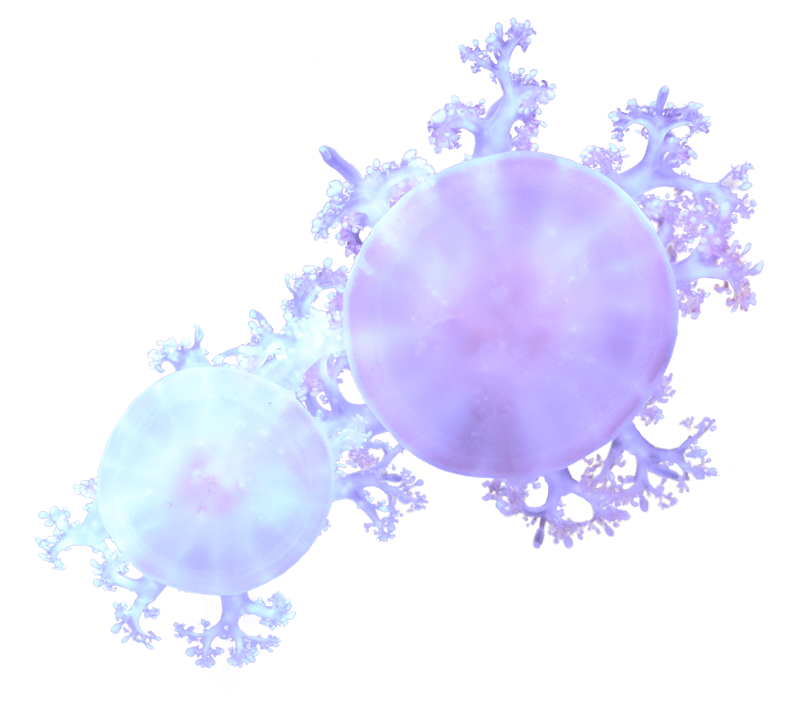
Cassiopea ornata (Haeckel, 1880)
逆さになる理由とは?
Why are they upside down?
傘径幅10 – 12cm。分布域が広く、世界中の亜熱帯や熱帯の水流の穏やかな浅海域に生息しています。クラゲは傘を上に向けて浮遊する種がほとんどですが、サカサクラゲは傘を下に向けて逆さになり生活しています。
その理由ですが、サカサクラゲは体に植物プランクトンの褐虫藻を宿し、褐虫藻がつくる光合成による栄養素を搾取して生きています。褐虫藻は多くは足に共生しているので、たくさん足に太陽光を当て、効率よく光合成するために逆さになっているといわれています。傘は扁平で中央が少し凹んでおり、水族館の水槽のガラスに吸盤のようにくっつけている姿をよく見かけます。自然環境では平らな面はほとんどありませんので、アクアリウムならではの光景です。
近年の研究ではサカサクラゲは夜間に睡眠のような状態を示すことが明らかになりました。クラゲ等の刺胞動物は7 億年以上前に他の動物と分岐した脳を持たない原始的な動物ですが、脊椎動物などと同様に睡眠現象が起こることは、進化の過程において睡眠が生物にとって果たす役割を考える上で興味深い事実です。
With a diameter of 10-12cm, this jellyfish has a wide distribution, living in calm, shallow waters in subtropical and tropical regions around the world. While most jellyfish species float with their umbrella facing up, the upside-down jellyfish lives upside down with its umbrella facing downwards.
The reason for this is that the upside-down jellyfish houses the phytoplankton zooxanthellae in its body and survives by extracting nutrients from the zooxanthellae through photosynthesis. Since the zooxanthellae often live symbiotically in the jellyfish’s legs, it is believed that the upside-down jellyfish’s umbrella allows sunlight to reach the legs, allowing for efficient photosynthesis. Its umbrella is flat with a slight depression in the center, and it is often seen clinging to the glass of an aquarium tank like a suction cup. Flat surfaces are rare in the wild, making this a unique sight in aquariums.
Recent research has revealed that the upside-down jellyfish exhibits a sleep-like state at night. Jellyfish and other cnidarians are primitive animals without brains that branched off from other animals over 700 million years ago. However, the fact that they experience sleep phenomena just like vertebrates is an interesting fact when considering the role that sleep plays in living organisms during the evolutionary process.
参考文献
黒潮生物研究所 | Web図鑑 黒潮の生き物たち | サカサクラゲ 2025年2月2日閲覧
男鹿水族館 | 生き物たち | サカサクラゲ 2025年2月2日閲覧
海遊館 | ブログ「海遊館日記」 | 裏側シリーズ | (2016年2月27日) 2025年2月2日閲覧
金谷 啓之, 伊藤 太一「刺胞動物を用いた概日リズム・睡眠研究」時間生物学 Vol. 28, No. 2 (2022) p87 – 93. 2025年2月2日閲覧